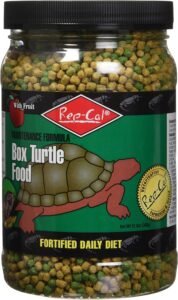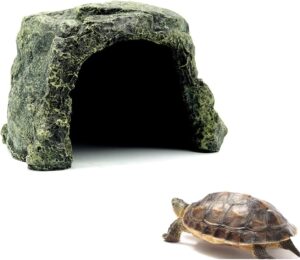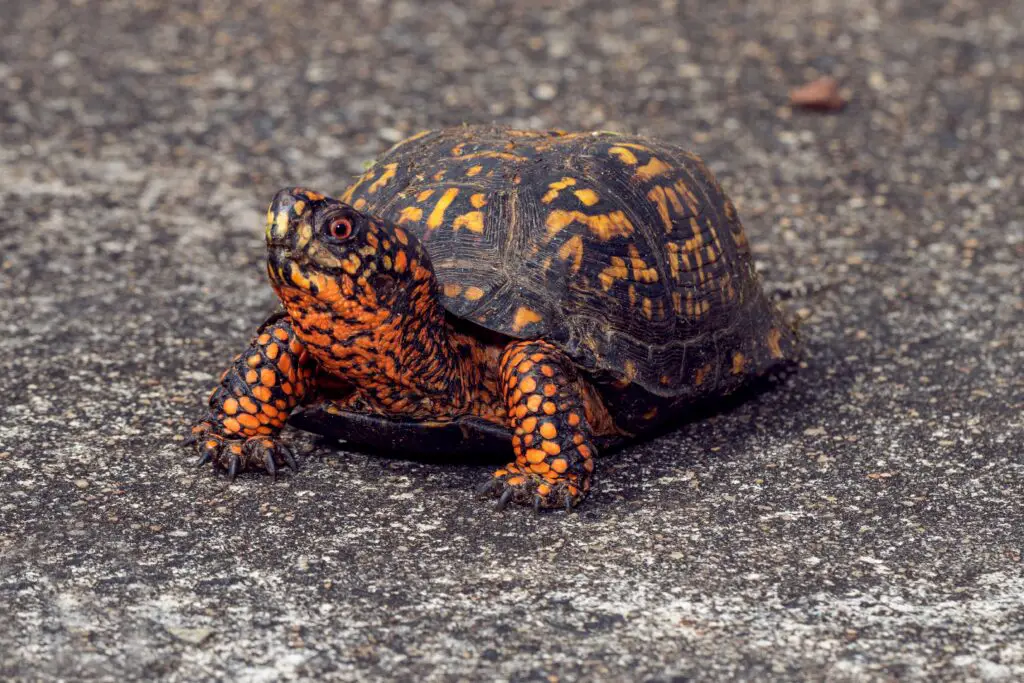How to tell how old a box turtle is
How to tell how old a box turtle is: Box turtles, with their unique features and captivating behavior, are truly fascinating reptiles that have captured the attention of both scientists and nature enthusiasts. These distinctive creatures belong to the genus Terrapene and are found primarily in North America. What makes box turtles particularly interesting is their ability to retract their head, limbs, and tail completely into their shell, providing them with exceptional defense against predators.
Brief Overview of Box Turtles as Fascinating Reptiles
Box turtles are known for their domed carapace, which can vary in color from olive green to brown or even black. The carapace is composed of many intricate plates called scutes that overlap each other for protection. Additionally, they possess a hinged plastron (the underside of the shell) which allows complete closure when threatened.
These reptiles exhibit diverse behaviors such as basking in the sun, burrowing into moist soil to regulate body temperature or evade extreme weather conditions, and an omnivorous diet consisting of various plants, fruits, insects, worms, and even small vertebrates. Their relatively long lifespan—often exceeding 50 years—further adds to their allure.
Importance of Determining the Age of a Box Turtle for Conservation Efforts and Understanding Their Life Cycle
 Understanding the age structure within a population of box turtles holds great significance for conservation efforts. By determining the age distribution within a given area or habitat, scientists can gain valuable insights into population dynamics such as reproduction rates and survival rates at different life stages.
Understanding the age structure within a population of box turtles holds great significance for conservation efforts. By determining the age distribution within a given area or habitat, scientists can gain valuable insights into population dynamics such as reproduction rates and survival rates at different life stages.
This information aids in developing effective management strategies to promote sustainable populations not only of box turtles but also other species within their ecosystem. Furthermore, knowledge about a box turtle’s age is crucial for comprehending its life cycle.
Different age cohorts may exhibit varying reproductive behaviors or habitat preferences throughout their lives. By discerning these patterns based on age, researchers can better grasp the life history of box turtles, including their growth rates, reproductive maturity, and potential factors that influence their survival.
Box turtles are captivating reptiles renowned for their unique shell structure and intriguing behaviors. Determining the age of box turtles is vital for conservation efforts as it allows scientists to monitor population dynamics and develop appropriate management strategies.
Additionally, understanding the life cycle of these remarkable creatures provides valuable insights into their growth patterns and reproductive habits. Through careful examination using various methods, we can unravel the mysteries surrounding a box turtle’s age and contribute to ensuring their long-term survival in our ever-changing world.
General Indicators of Age
Size and Weight
How to tell how old a box turtle is: One of the primary indicators of a box turtle’s age is its size and weight. Younger turtles are generally smaller and lighter compared to their older counterparts.
Hatchlings, freshly emerged from their eggs, typically measure between 1 to 2 inches in length and weigh just a few grams. As they grow, their size increases gradually over the years, reaching adulthood at an average length of 4.5 to 6 inches.
Furthermore, the weight of a box turtle can also provide insight into its age. Younger turtles tend to be lighter as they have not yet fully developed their bone structure and muscle mass.
As they mature, older turtles become heavier due to increased body mass and denser bones. However, it’s important to note that there can be variations in size and weight based on factors such as species, geographic location, access to food sources, and overall health.

Shell Condition
The shell condition is another crucial factor when determining a box turtle’s age. The shell undergoes significant changes as the reptile ages due to exposure to various environmental factors. Younger turtles typically possess smoother shells with fewer blemishes or marks.
As they grow older, however, the shell becomes more worn, scuffed, and weathered. Over time, a box turtle’s shell accumulates scratches from encounters with rough surfaces or predators’ attempts at gaining access inside the shell for protection.
These scratches may appear as indented lines or grooves on the carapace (upper shell) or plastron (lower shell). In addition to scratches, older turtles often display signs of erosion or pitting caused by exposure to rainwater acidity or abrasive elements in their natural habitats.
Claws
The length and curvature of a box turtle’s claws offer valuable clues about its age. When turtles are young, their claws are relatively short and less pronounced.
As they age, the claws undergo continuous growth, resulting in longer and more curved appendages. This growth is primarily attributed to the turtle’s need for digging burrows, foraging for food, and defending themselves against predators.
The curvature of the claws is particularly noticeable in older box turtles due to the gradual thickening of the keratinized material that forms their claws. This natural process enables them to better grasp surfaces and provides increased stability as they navigate their surroundings.
By comparing the length and curvature of a turtle’s claws with known age specimens or other indicators mentioned earlier, one can make an educated estimation regarding its age. Size, weight, shell condition, and claw characteristics are general indicators used to determine a box turtle’s age.
Understanding these factors helps researchers, conservationists, and enthusiasts gain valuable insights into population dynamics, life cycle patterns, and overall health of these captivating reptiles. However, it is important to note that while these indicators provide useful information about a turtle’s age range or stage of development, obtaining a precise numerical value for its exact age often requires more specialized scientific methods such as examining growth rings or keratin patterns on scutes.
Growth Rings on Scutes: How to tell how old a box turtle is
 Scutes, the individual sections that compose a turtle’s shell, play a significant role in determining the age of a box turtle. These scutes serve as protective layers for the underlying bone, and their growth can be observed and studied to estimate the turtle’s age.
Scutes, the individual sections that compose a turtle’s shell, play a significant role in determining the age of a box turtle. These scutes serve as protective layers for the underlying bone, and their growth can be observed and studied to estimate the turtle’s age.
Much like tree rings, growth rings form on each scute as a result of annual growth. As turtles grow older, these growth rings become more pronounced and distinct.
In younger turtles, the rings might be closer together and less prominent due to their relatively faster growth rates during early stages of life. Conversely, in adult turtles, where growth slows down significantly or even ceases entirely in some cases, the rings may appear wider apart and more visible.
Counting these growth rings on the scutes is typically considered an effective method for estimating a box turtle’s age. Each ring represents approximately one year of growth; therefore, by carefully examining these rings along with other indicators, such as size and weight, one can develop an estimation of how old a particular turtle might be.
However, it is important to note that this method is not without limitations. Factors like environmental conditions and nutrition can influence ring formation and make accurate counting challenging at times.
Examination of Scute Keratin
The keratin layer present on each scute of a box turtle plays a significant role in their overall shell health and growth. Keratin is a tough, fibrous protein that forms the outer layer of the scutes, providing protection and structural integrity to the shell. As turtles age, this keratin layer continues to grow and gradually becomes thicker over time.
Examining under Ultraviolet (UV) Light
One fascinating method to determine the age of a box turtle is by examining the keratin layer under ultraviolet (UV) light. UV light can reveal distinct patterns in the keratin that are related to age. This technique exploits the fact that older turtles have been exposed to more UV radiation over their lifespan than younger ones.
UV Fluorescence
How to tell how old a box turtle is: When exposed to UV light, older box turtles’ keratin layers tend to fluoresce more intensely compared to younger turtles. This fluorescence phenomenon occurs due to prolonged exposure to UV radiation, which causes chemical changes in the structure of the keratin.
The accumulated exposure leads to an increased fluorescence response when illuminated with UV light. Note: It is important to mention that conducting this method requires specialized equipment and expertise.
Only professionals trained in herpetology or those with access to research facilities can effectively utilize this technique for age determination in box turtles. Performing proper examination under UV light ensures accuracy and prevents misinterpretation of results.
Beak Condition
Highlight the beak as another indicator of a box turtle’s age.
The beak of a box turtle can provide valuable insights into its age. Just like other parts of their body, the beaks of box turtles change as they grow older. By examining the condition and texture of a turtle’s beak, one can gather clues about its approximate age.
Discuss how young turtles have softer beaks that…
 Young box turtles typically have softer beaks compared to their older counterparts. When they hatch, their beaks are pliable and slightly flexible.
Young box turtles typically have softer beaks compared to their older counterparts. When they hatch, their beaks are pliable and slightly flexible.
This softness allows them to eat soft vegetation and tiny invertebrates more easily during their early stages of life when they require a more delicate diet. As a box turtle ages, its beak gradually hardens.
The once pliable structure becomes harder and more keratinized over time. Older turtles develop stronger jaws and sturdier beaks that enable them to consume tougher food items such as beetles, worms, mushrooms, and even small vertebrates.
Examining the condition of the beak can give us an idea of whether a turtle is still in its youth or has reached maturity. However, it is worth noting that this method alone may not provide an exact age determination; it is merely one piece of the puzzle when trying to estimate a box turtle’s age accurately.
To sum up How to tell how old a box turtle is
Determining the age of a box turtle can often feel like unraveling an intricate puzzle. By considering various indicators such as size and weight, shell condition, growth rings on scutes, examination of scute keratin under UV light, and the condition of the beak, we can begin to piece together an estimate.
While each method has its limitations and may only offer rough approximations rather than precise numbers, collectively they contribute to our understanding of a box turtle’s age. This knowledge is crucial for conservation efforts and studying their life cycle.
By gaining insights into a box turtle’s age, we can better understand their population dynamics, reproductive patterns, and overall health. Armed with this information, scientists and conservationists can develop targeted strategies to protect these remarkable reptiles and ensure their continued survival for generations to come.
Further Reading
How To Keep My Turtle Tank From Smelling
How To Decorate a Turtle Tank: DIY Guide


